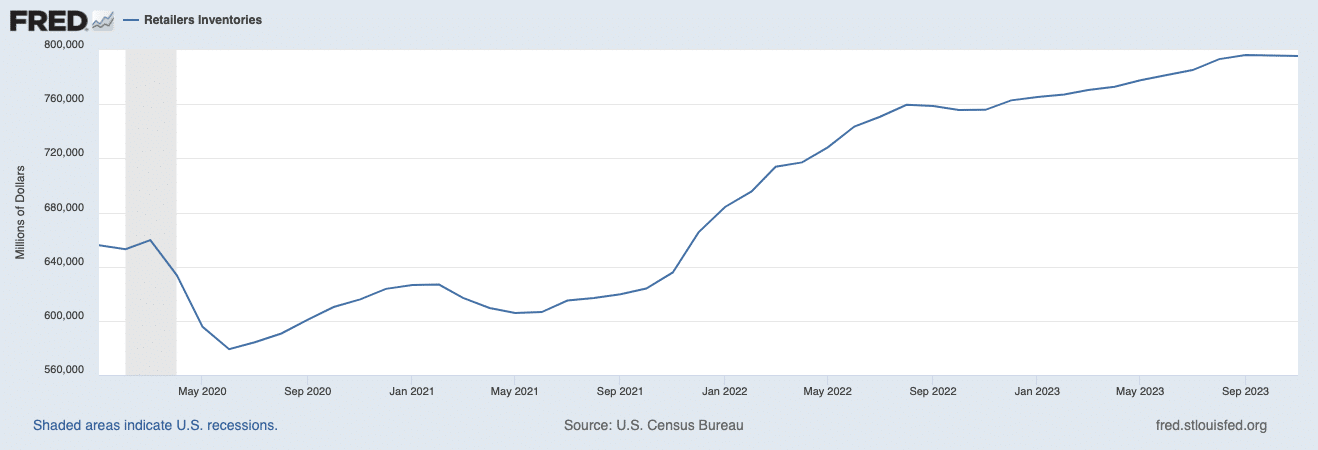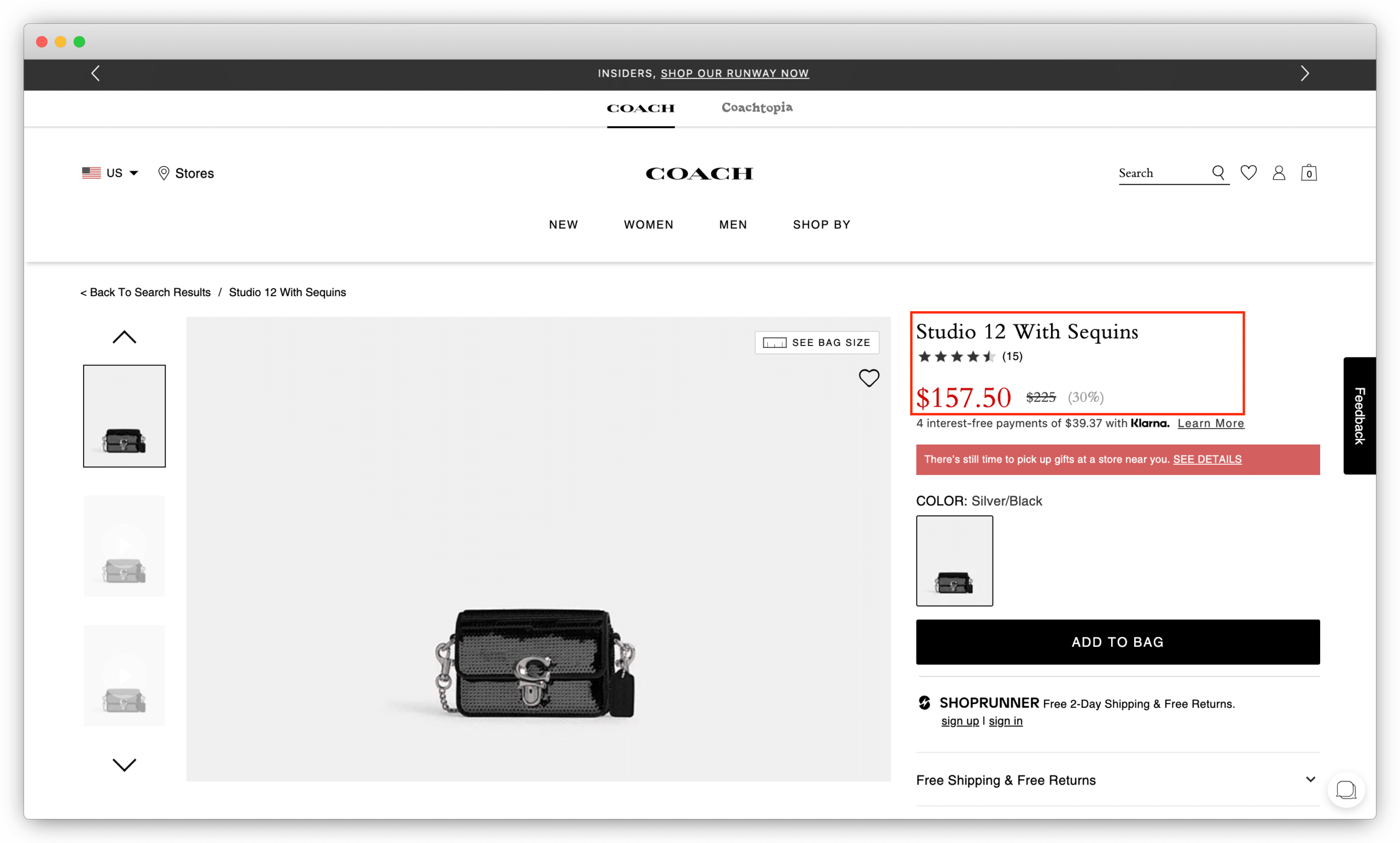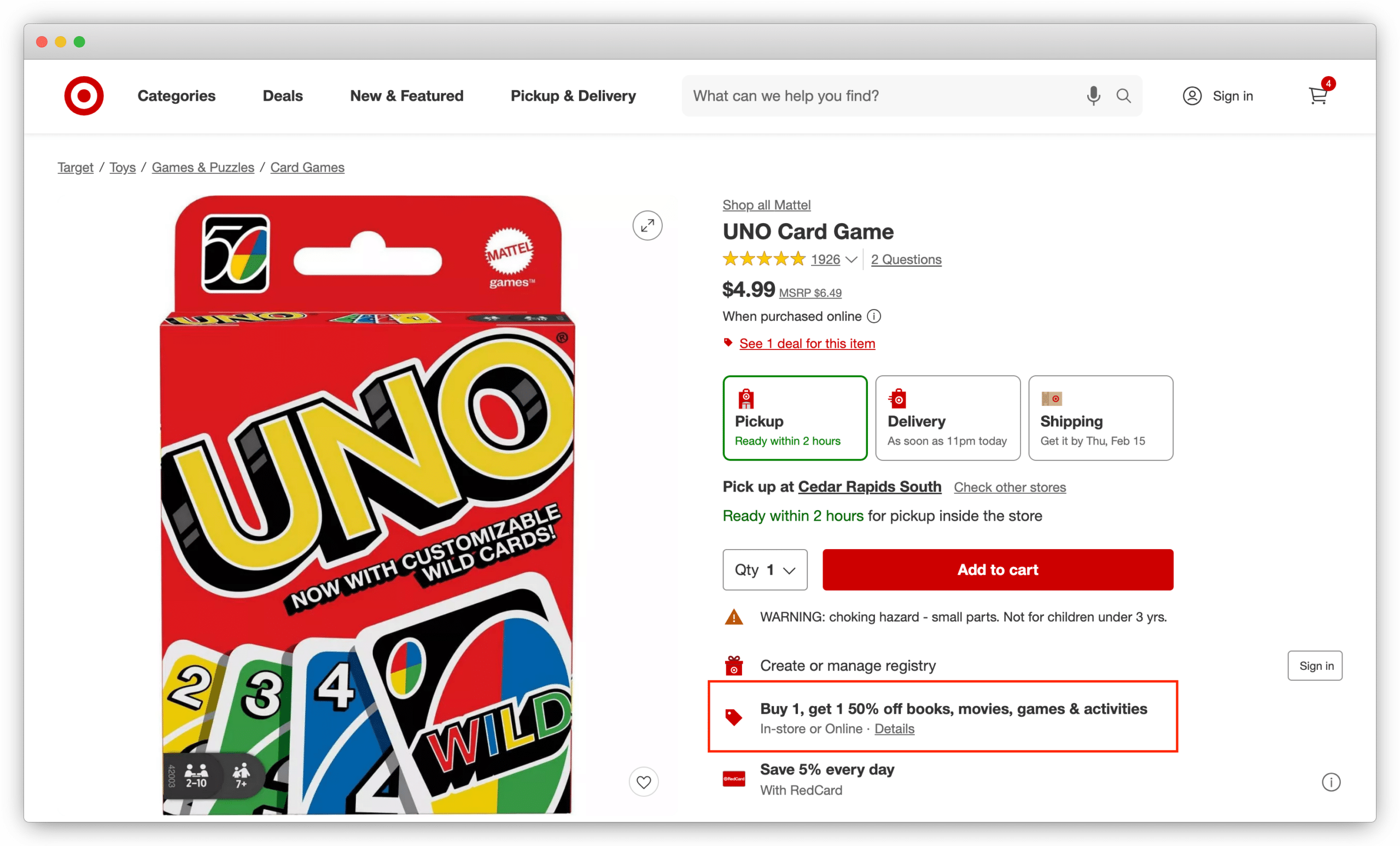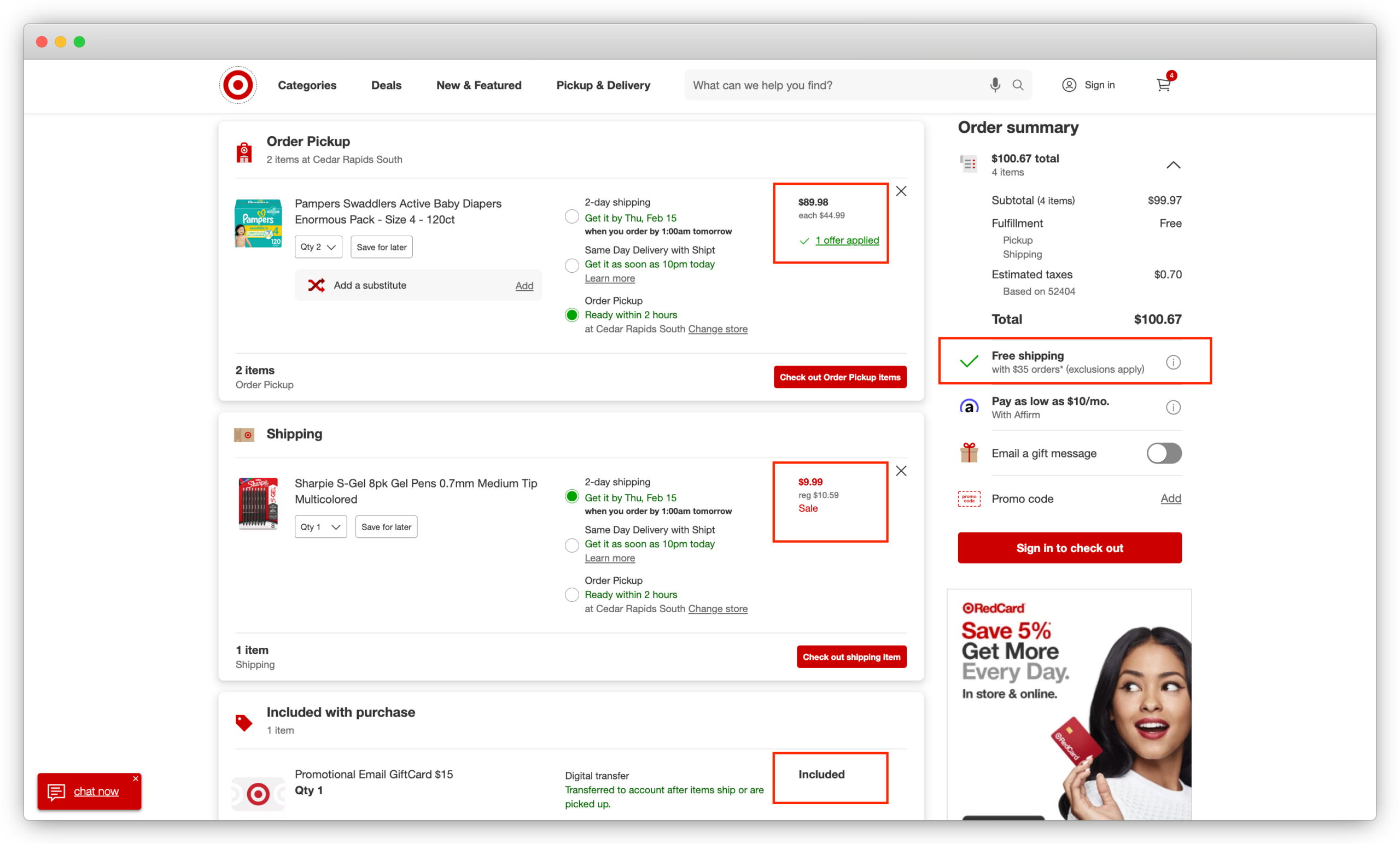8 must-know retail markdown strategies with a pricing and promotions engine

E-commerce retailers use markdown strategies to reduce prices on products sold online. Markdowns help to clear out excess inventory and drive sales.
For retailers with large-scale multi-item inventory systems, a pricing and promotions engine is a software tool that can manage and optimize markdown strategies.
To clear excess inventory, retailers can set price types, use SKU promotions, use SKU quantity promotions, use “buy more save more” promotions, use shipping promotions, target product or customers, offer coupons, and stack offers.
fabric’s Offers is a robust pricing and promotions engine that empowers retailers to efficiently clear excess stock and improve inventory health with promotions, discounts, and coupons.
In the world of retail, markdowns are inescapable. When deciding which items to stock, buyers often rely on past sales data and their instincts to make educated guesses about future buys.
But mistakes and miscalculations happen. Slight errors in demand forecasting can cause inventory levels to soar, leading to excess supply and declining profits. In fact, the amount of unsold stock in the U.S. recently reached record highs. After a blistering rise of 11% through 2022, the value of U.S. retail inventories rose another 4% to reach $795 billion in November 2023.

One way to improve inventory health is to use a robust pricing and promotions engine, like fabric Offers (Offers), to implement an effective markdown strategy. Boasting a real-time decision engine and advanced features and capabilities, it gives retailers more flexibility and control to drive conversions and boost inventory turnover.
In this article, we’ll cover the ins and outs of inventory markdowns in retail. We’ll also provide a list of 8 must-know retail markdown strategies that you can implement to clear out stock and create a healthy balance between inventory levels, sales, and profitability. Let’s dive in!
[toc-embed headline=”What is a markdown strategy in e-commerce?”]
What is a markdown strategy in e-commerce?
A retail markdown strategy, or markdown pricing strategy, involves reducing prices on products sold online to clear out excess inventory and drive sales. Enterprise retailers with large-scale multi-item inventory systems often require powerful software to analyze real-time market data, customer behavior, and inventory levels to dynamically adjust prices and promotions. By leveraging a pricing and promotions engine, retailers can implement targeted markdowns and campaigns that are tailored to certain customers, products, market conditions, or other variables to clear out excess inventory.
[toc-embed headline=”What is a markdown?”]
What is a markdown?
A markdown is the reduction in the selling price of a product. It’s often used to stimulate sales or move excess inventory or outdated products by offering discounts to customers. Markdowns can be temporary, such as for promotional events or seasonal sales, or they can be permanent, such as in response to changes in market conditions, shifts in consumer demand, or efforts to stay competitive with other retailers.
What causes retailers to markdown inventory?
The potential reasons for markdowns are many. Here are some common reasons why retailers markdown inventory:
- Overstock: Buyers may purchase too much stock for a number of reasons. Consumer preferences may change or buyers may overcompensate when faced with demand surges. Retailers can also buy the wrong colors, sizes, or styles, fail to accurately time or schedule orders, or buy too much stock for specific seasons or holidays.
- End of product lifecycle: After products are introduced, demand grows, matures, and eventually declines. When products near the end of their lifecycle, such as fashion items or technology gadgets, sales velocity slows. These items may be marked down before they become obsolete.
- Damaged, defective, or “open box” goods: Display units, returned items, and items with minor defects, damage, or have been previously opened may be marked down for sale “as-is” to avoid potential returns or disposal costs.
- Pricing issues: Customers expect fair and competitive prices when shopping. Setting initial base prices too high can deter customers from purchasing items while setting prices too low could cause skepticism. Both can lead to surplus inventory and markdowns. Retailers may also markdown prices in response to pricing strategies of competitors.
- Poor shopping experience: According to the Baymard Institute, the top 5 reasons for customers abandoning their carts include high costs for shipping, taxes, and fees, requests to create an account, slow delivery, lack of trust, and complex checkout processes. Friction across the shopping experience results in lost sales, unsold inventory, and eventually markdowns.
- Promotional events: Markdowns are often used as part of promotional events such as sales, clearance events, or special promotions to attract customers and increase sales volume.
- Holiday periods: Markdowns are also used with gift giving during Christmas holidays, valentine’s day, mother’s day and father’s day, and also the lunar new year.
[toc-embed headline=”What is a pricing and promotions engine?”]
What is a pricing and promotions engine?
A pricing and promotions engine is a software tool that’s designed to help retailers manage and optimize their pricing and promotions strategies. Offers is a purpose-built commerce pricing and promotion engine that empowers merchant operators to define product prices and influence shopper behavior through targeted discounts. Using Offers, retailers can:
- Manage everyday pricing: Maintain real-time, accurate pricing data for all items in catalog.
- Optimize promotions: Configure promotions to impact the metrics such as average order value and conversions.
- Run targeted discounts: Focus promotions on specific product sets and/or customer segments to drive incremental revenue.
Check out these articles on pricing and promotions engines to learn more:
- Building vs. Buying a Pricing Engine for Your E-Commerce Business
- The Enterprise Guide to Promotions Engines for Retailers
[toc-embed headline=”8 powerful markdown strategies using a pricing and promotions engine”]
8 powerful markdown strategies using a pricing and promotions engine
To improve inventory health, retailers can use price elasticity to stimulate demand. However, when it comes to enterprise-level operations, retailers often turn to software to simplify markdowns across large-scale inventory systems.
Offers allows enterprise retailers to set precise rules to adjust everyday sales prices or use temporary discounts in the form of a promotions, discounts, and coupons. For markdowns, we’ve compiled a list of 8 powerful strategies that can be implemented using its robust features and capabilities. With Offers, retailers can:
- Set price types
- Use SKU promotions
- Use buy more, save more promotions
- Use SKU quantity promotions
- Use shipping promotions
- Target specific customers
- Offer coupons
- Stack offers or promotions
1. Set price types

A product detail page (PDP) displaying the base price (with strikethrough) and current sale price of an item on coach.com.
One powerful markdown strategy is to use price types to stimulate demand. With Offers, when listing products for sale, different price types usually include a base price, a sale price, and a cost price. You can use what’s known as strikethrough pricing to display price reductions from the base price to the sale price across product listing pages (PLPs) and product detail pages (PDPs). Sale prices also do not require a promotion or a coupon.
Setting the cost prevents any markdowns from going below the cost of purchasing the product. This acts as an automatic guardrail but can be overridden when a retailer wants to place items on clearance. In the example above for soma.com, the retailer displays the original base price (with strikethrough) and current sale price of the item.
2. Use specific SKU promotions
Promotions act as incentives to encourage customers to make a purchase. With Offers, promotions are discounts on items, carts, or shipping that are applied automatically once the required conditions are met.
When it comes to markdown strategies, a SKU promotion is when discounts are applied when specific SKUs are purchased. Offers allows retailers to offer an amount off, a percentage off, or a fixed discounted price on the items. Retailers can also target specific parts of a catalog with markdowns. For example, instead of running discounts category wide or brand-wide, a retailer can run a promotion that uses a combination of categories, collections, and attributes to specifically target all t-shirts, size XL, of a specific brand. Offers can narrowly target specific items or variants of the inventory product catalog that you want to sell through.
3. Use Buy More, Save More promotions

A PDP offering a buy more, save more promotion on target.com.
If you’ve ever encountered “buy two, get one free” promotions or “spend $100, get $20 off” promotions on an e-commerce site, these are likely being powered by a promotions engine with “buy-get” and “spend-get” capabilities. A buy-get is simply a promotion that allows you to discount products based on customers purchasing them in a bundle, while a spend-get is a promotion that discounts products after customers spend over a minimum amount.
These buy more, save more promotions help retailers move more units per transaction, versus using discounts to lower prices overall. By driving customers to add more items to cart, either through more units of a specific item or multiple units across a category, retailers can clear out overstock while increasing average order values (AOV) and boosting sales.
4. Use SKU quantity promotions
When trying to clear excess inventory, another simple strategy is to use SKU quantity promotions. In these scenarios, discounts are automatically applied after a certain quantity of SKUs are purchased.
In Offers, customers become eligible for a promotion once they add the minimum number of items to their cart. In addition to offering amounts or percentages off, the engine also allows for escalating discounts. For example, you could offer:
- 10% off once the cart reaches 3 items with eligible SKUs
- 15% off once the cart reaches 4 items with eligible SKUs
- 20% off once the cart reaches 5 items with eligible SKUs
5. Use shipping promotions
A cart page displaying a shipping promotion on aritzia.com.
Similar to “buy more, save more,” a shipping promotion gives customers either free shipping, or a dollar amount off/percentage off of the shipping cost of a purchase. For example, in the image above, Aritzia provides the estimated cost for shipping but offers free shipping to customers that spend over the $50 minimum spend threshold. When it comes to moving surplus inventory, discounting the shipping cost is a great way to incentivize purchases and offer more value to customers.
6. Target specific customers
Another mechanism is to give discounts to specific groups of customers. Segmentation is a way of grouping customers that share similar characteristics, such as loyalty status, demographics, location, or device type. For example, a loyalty segment may have customer tiers that are:
- Platinum
- Gold
- Silver
- Bronze
By creating segments and setting individual values, Offers allows you to either target discounts at specific groups or exclude discounts from specific groups. This can be used to incentivize various groups with markdowns to purchase products.
7. Offer coupons

A seasonal coupon promotion found on converse.com.
Similar to marking down prices, coupons are a great way to stimulate demand for slow-moving or surplus inventory. In Offers, coupons are discounts on items, carts, or shipping that are applied to a qualified purchase when shoppers provide a valid coupon code during the checkout process.
Any markdown strategy mentioned previously can also be implemented by using coupons. The only difference is that coupons require a valid discount code to be entered by the shopper.
Using Offers, retailers can send out two types of coupons:
- Multi-use: a specific coupon code (like “Freeship100”) can be used by multiple customers up to the specified limit.
- Single-use: large numbers of unique coupon codes are generated and can typically only be used once by an individual shopper.
8. Stack offers or promotions

A cart page stacking a shipping, SKU, and buy-get promotion on target.com.
As a markdown strategy, promotion stacking incentivizes customers by allowing multiple promotions or discounts to be applied to a single purchase. With stacking, customers can purchase more items or higher-value products, which quickly allows retailers to clear out excess inventory or outdated products. In the checkout page example above for target.com, the retailer stacked a SKU promotion, buy-get promotion, and a shipping promotion to give the customer bigger savings.
Offers provides four stacking settings to regulate how discounts interact:
- Stackable promotions allow stacking with any other discount except for those set to exclusive
- Type Exclusive prevents promotions of the same type from being stacked
- Exclusive promotions cannot be combined with other discounts
- Universal promotions are always applied last and can stack on any other promotion.
[toc-embed headline=”fabric streamlines inventory markdown management”]
fabric streamlines inventory markdown management
Offers boasts robust features and capabilities that empowers retailers to efficiently clear excess stock and enhance inventory health with pricing and promotion rules, along with discounts and coupons. More importantly, Offers is also an integral part of fabric, your next commerce platform for building world-class shopping experiences for customers.
In addition to offering a real-time pricing and promotions engine for managing inventory markdowns, fabric boasts a native order management system, dropship service, and product information management system to help retailers power merchandising to fulfillment on any channel.
Want to see our pricing and promotions solution in action? We’d love to speak with you!
Schedule a demo or contact a member of our team today.
[toc-embed headline=”FAQ”]
FAQ
What is an example of a markdown strategy?
An example of a markdown strategy is offering discounts on seasonal items at the end of their selling period to clear out inventory and make room for new merchandise. For enterprise retailers, this can be accomplished with a robust pricing and promotions engine that’s purpose-built for large inventory systems.
What is a markdown pricing strategy?
A markdown pricing strategy involves systematically reducing the selling price of products to stimulate sales, manage inventory, and maintain profitability, often in response to factors like slow sales or excess stock. A pricing and promotions engine like Offers allows retailers to set price types, which include the base price, sale price, and cost price to help with a markdown strategy.
What is an example of markdown optimization?
Retailers can’t simply mark down prices until products sell. Many factors need to be taken into account, including inventory turnover goals, margins, costs, and more. Too many markdowns also risk damage to the perception of a brand, effectively conditioning consumers to wait for prices to fall. An example of markdown optimization is using data analytics and pricing algorithms to dynamically adjust discounts, promotions, and pricing strategies in real-time to maximize revenue and minimize losses while effectively managing inventory.

Digital content editorial team @ fabric
